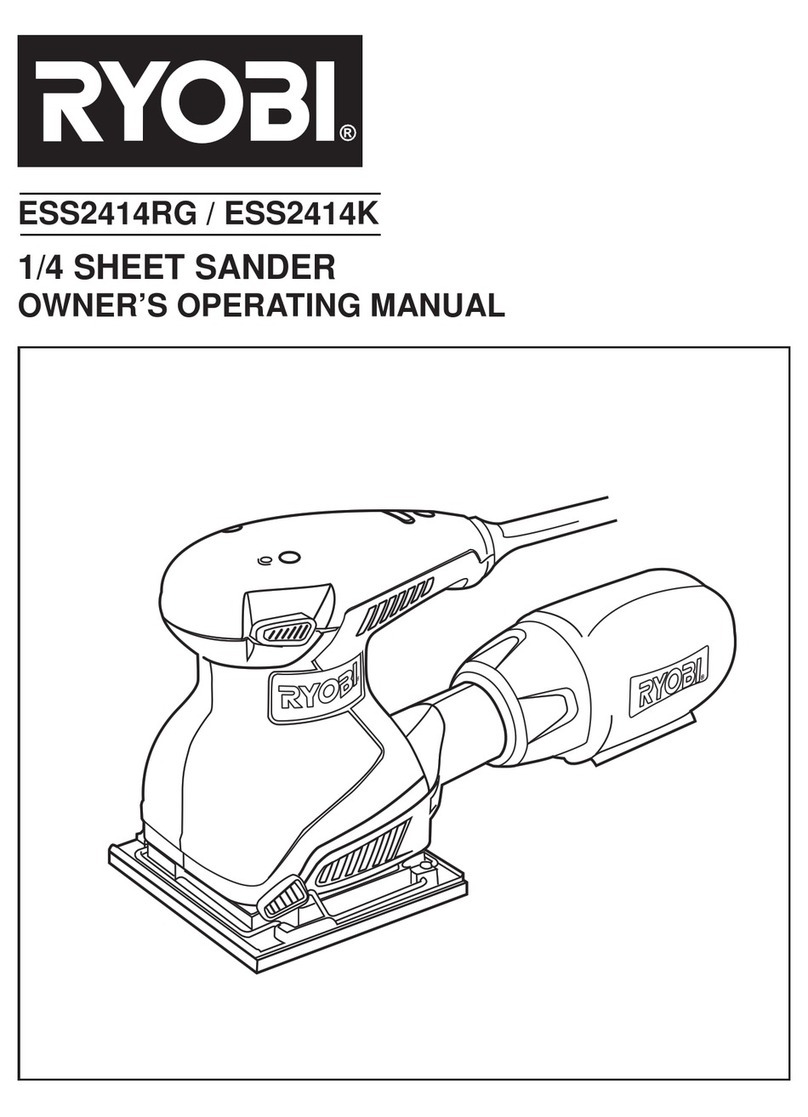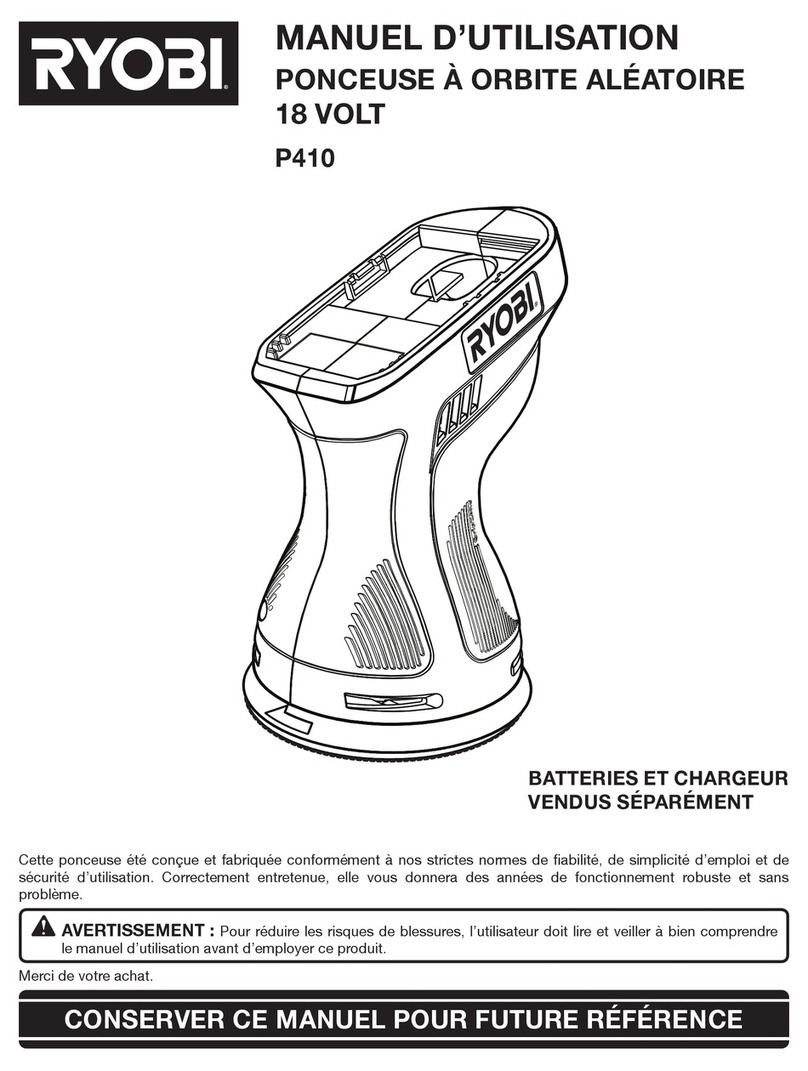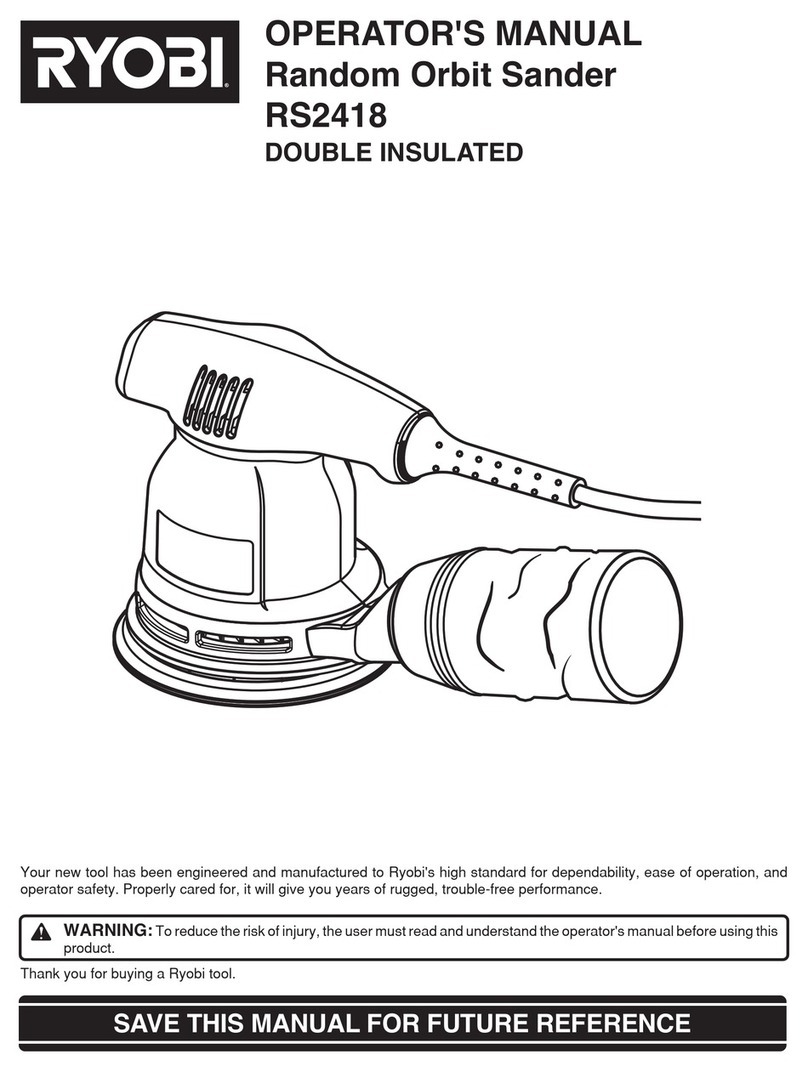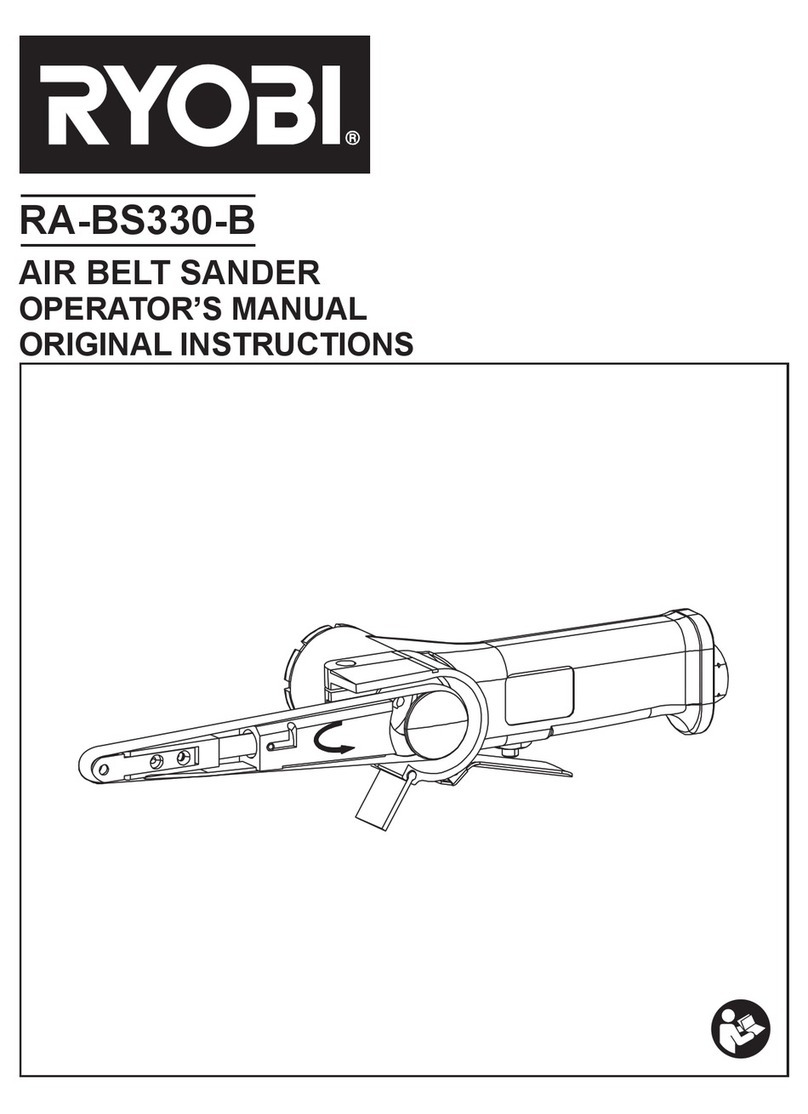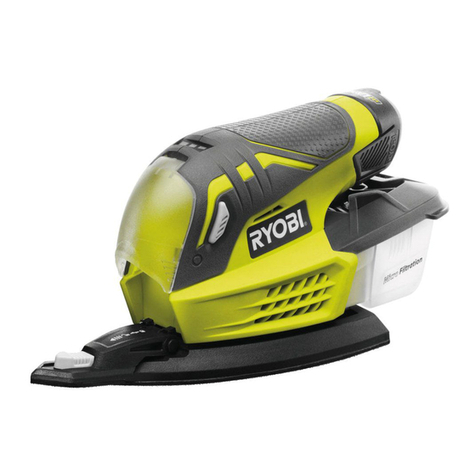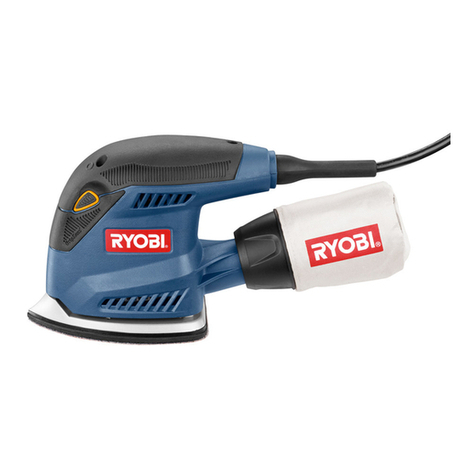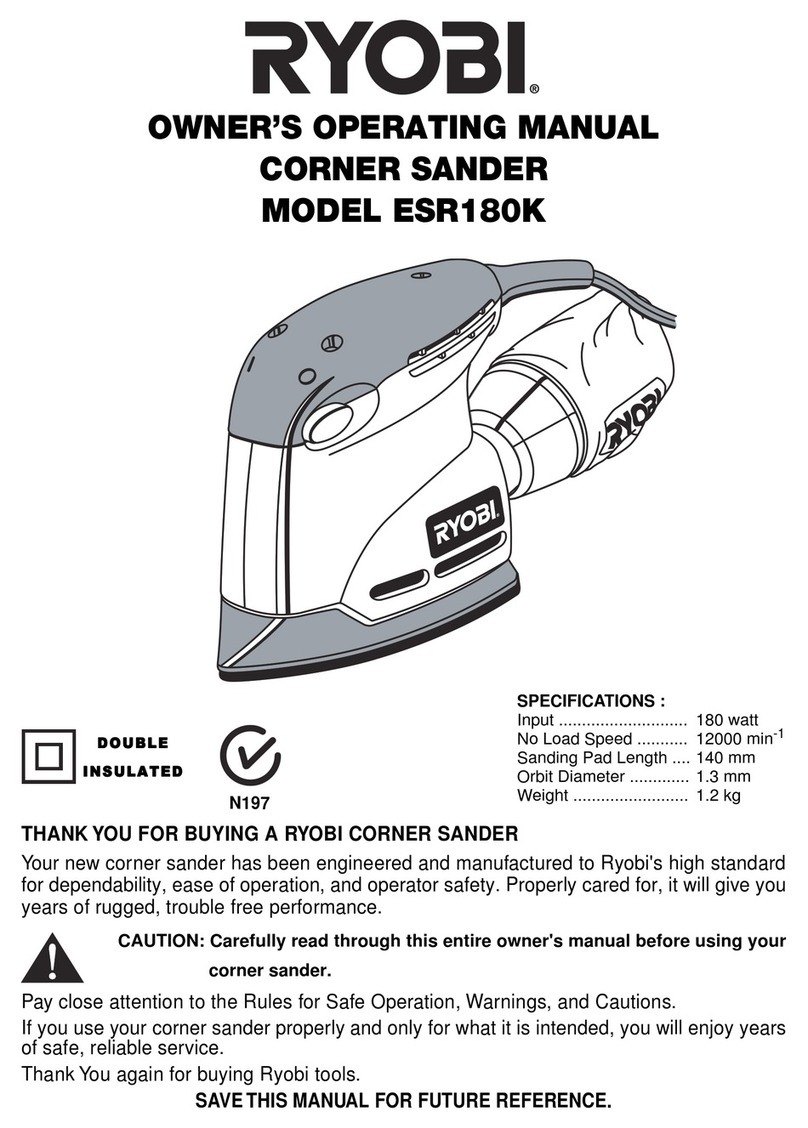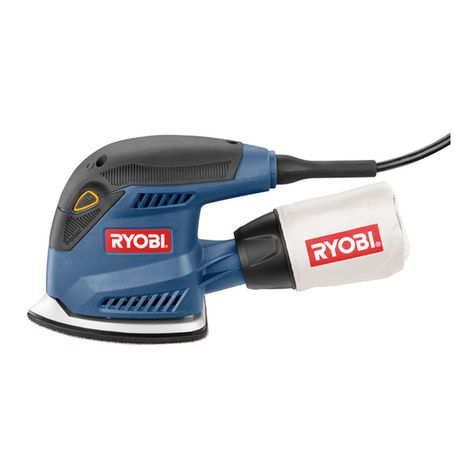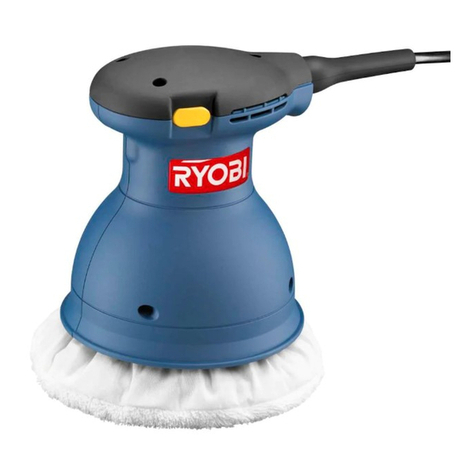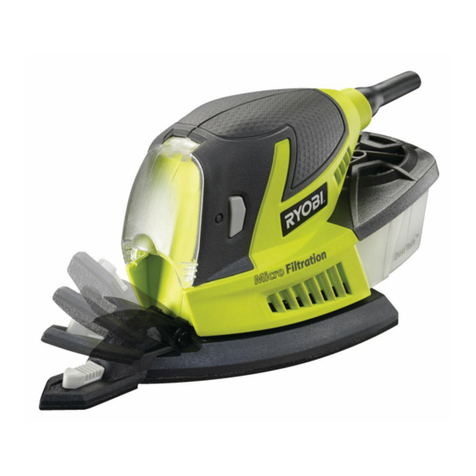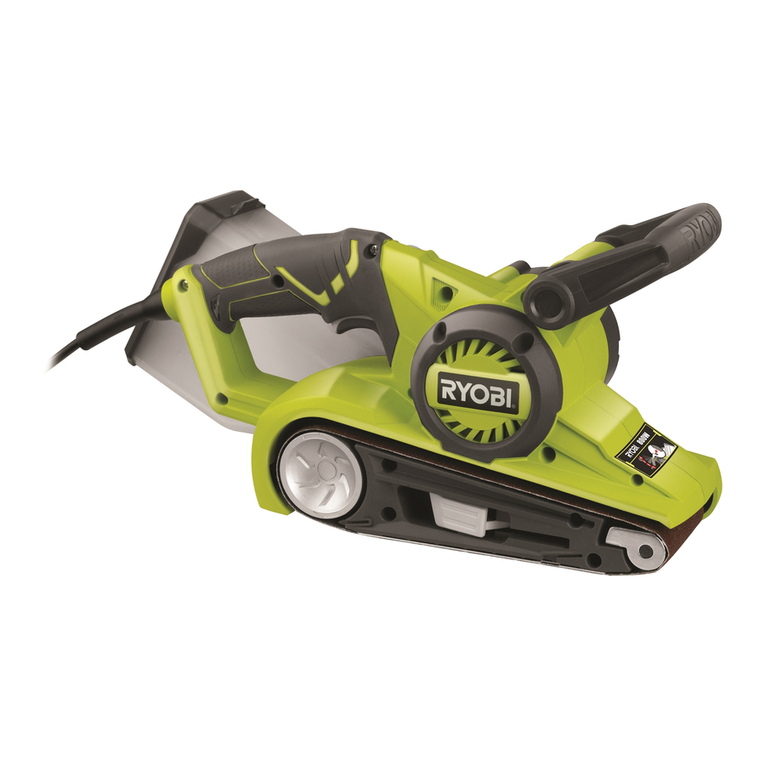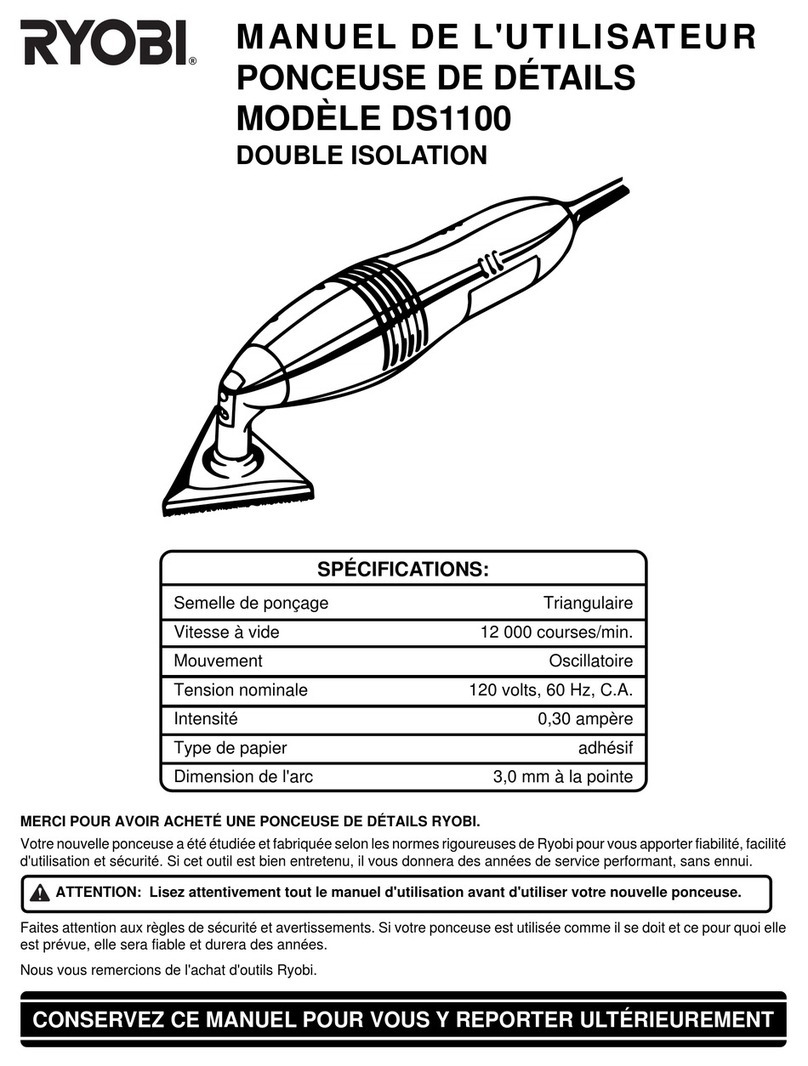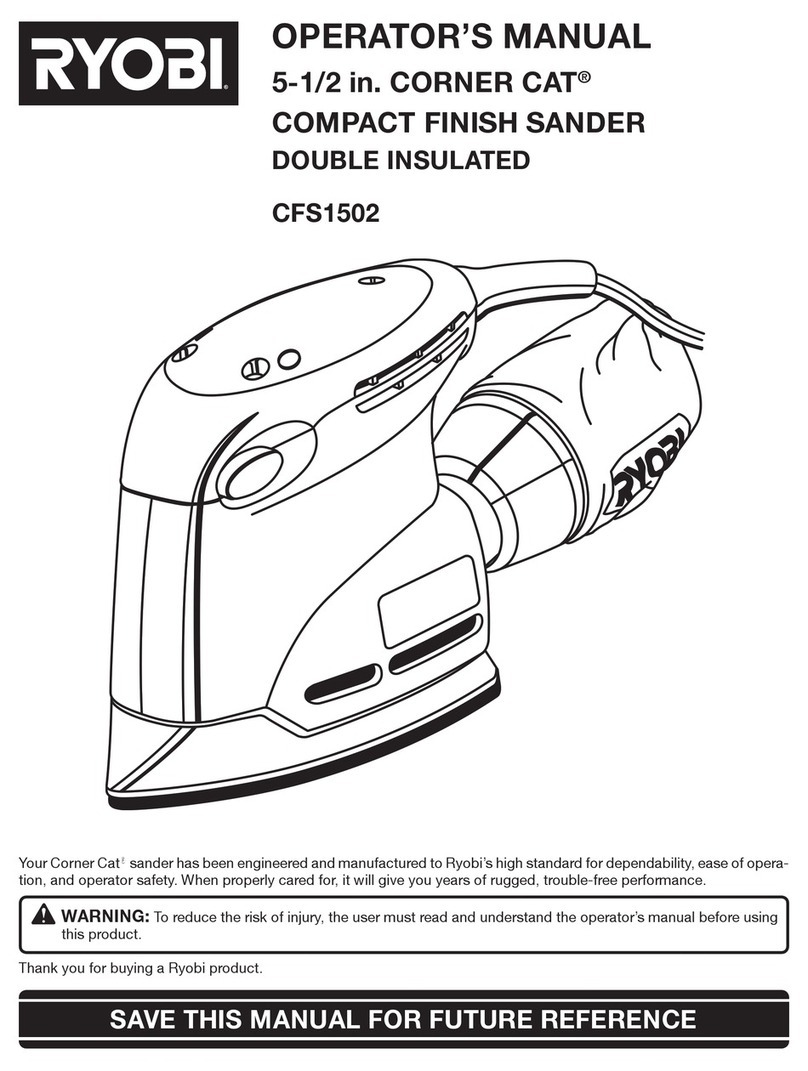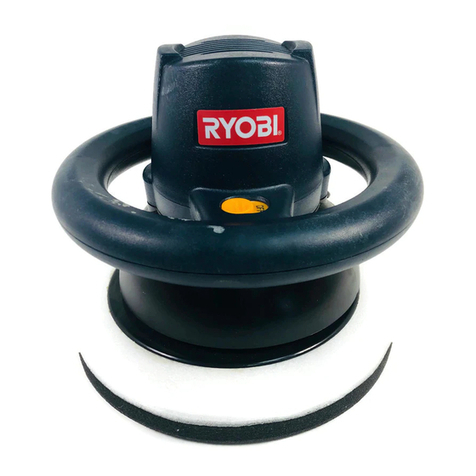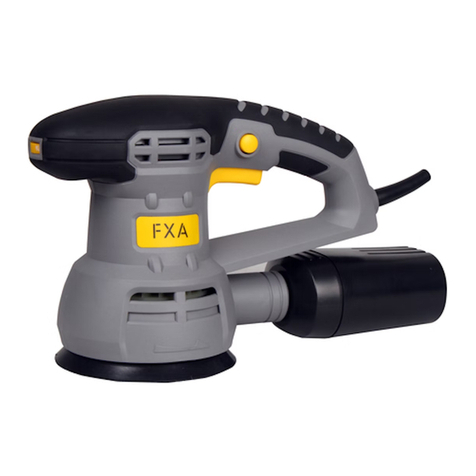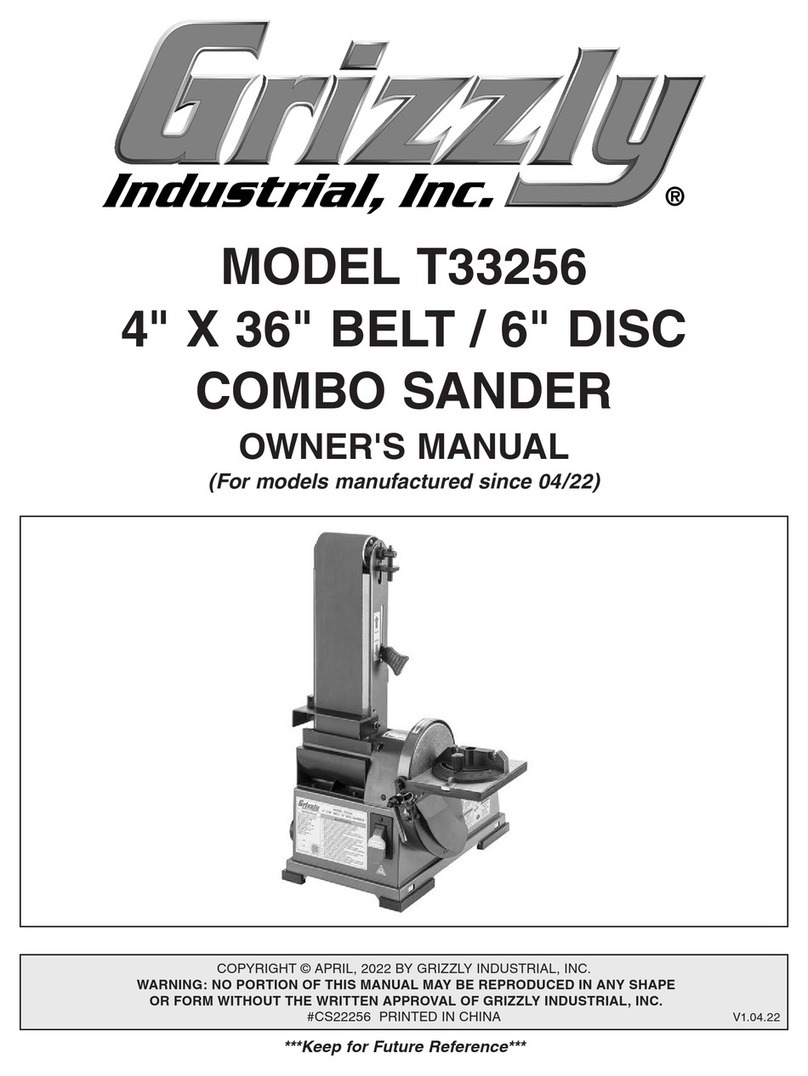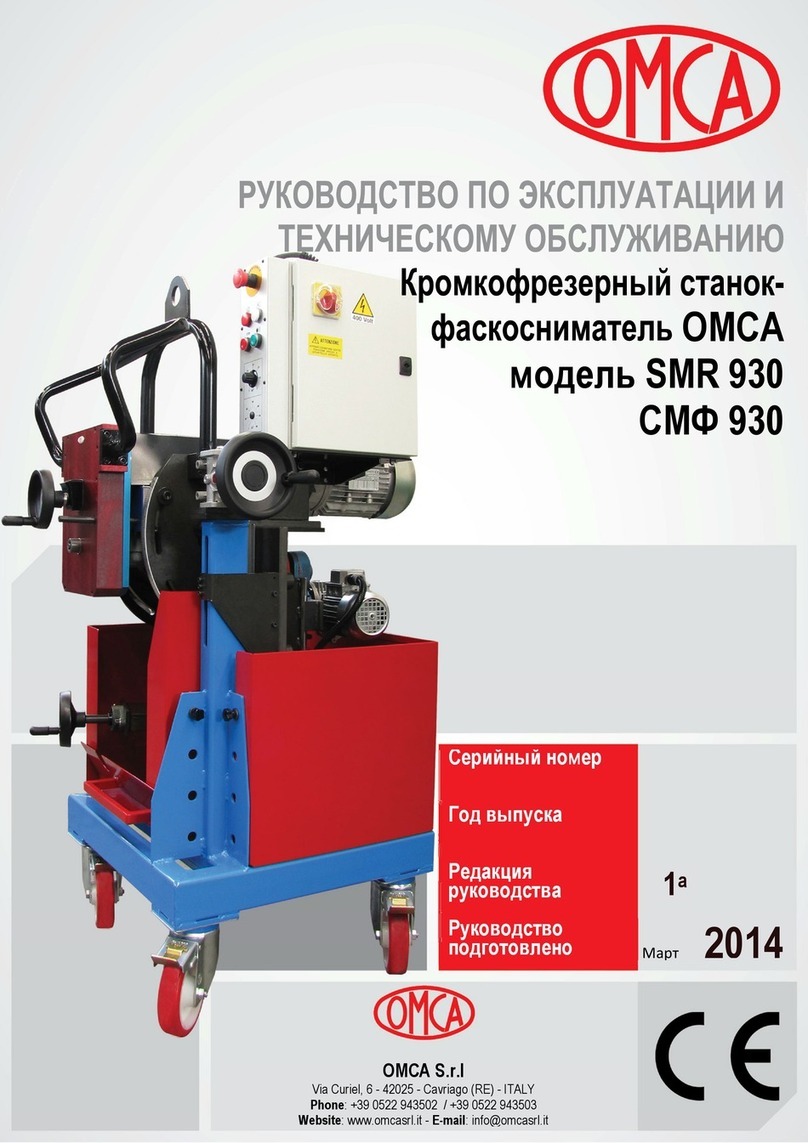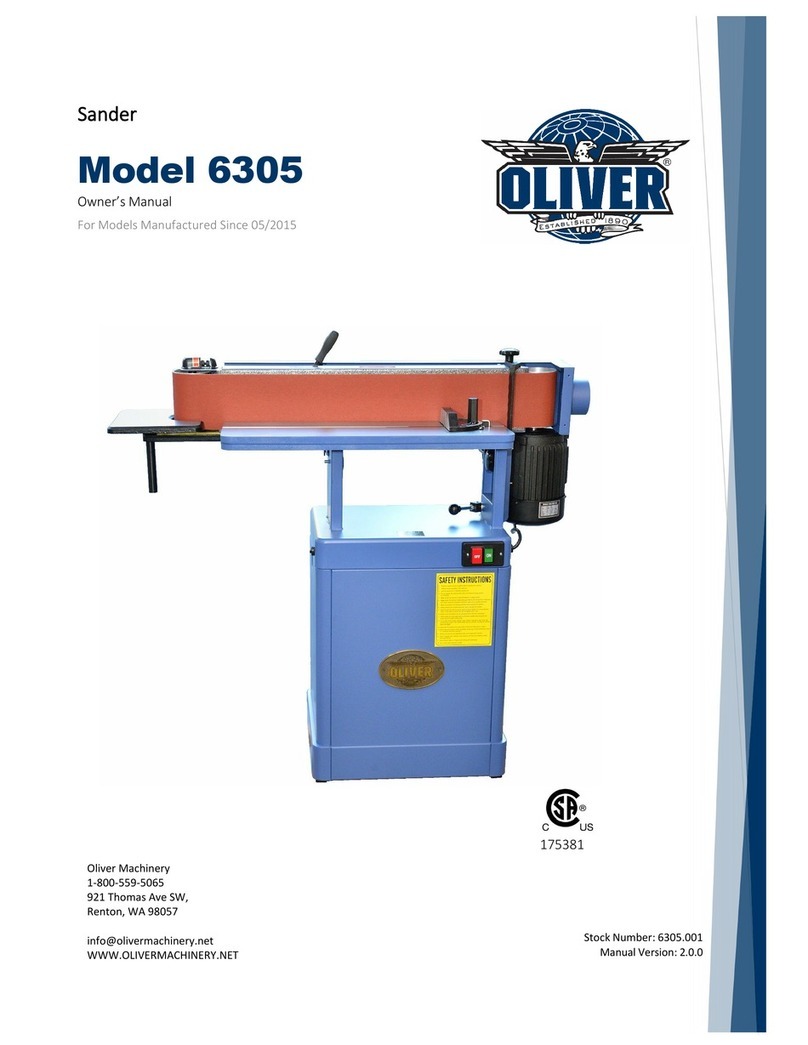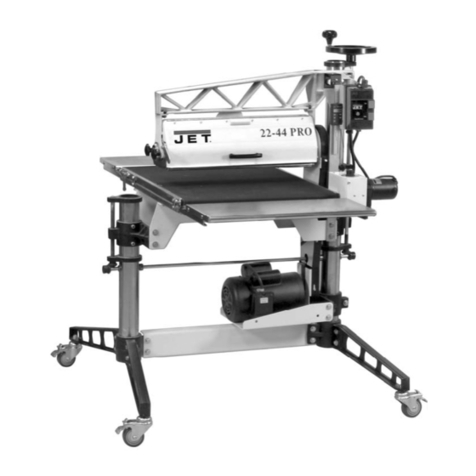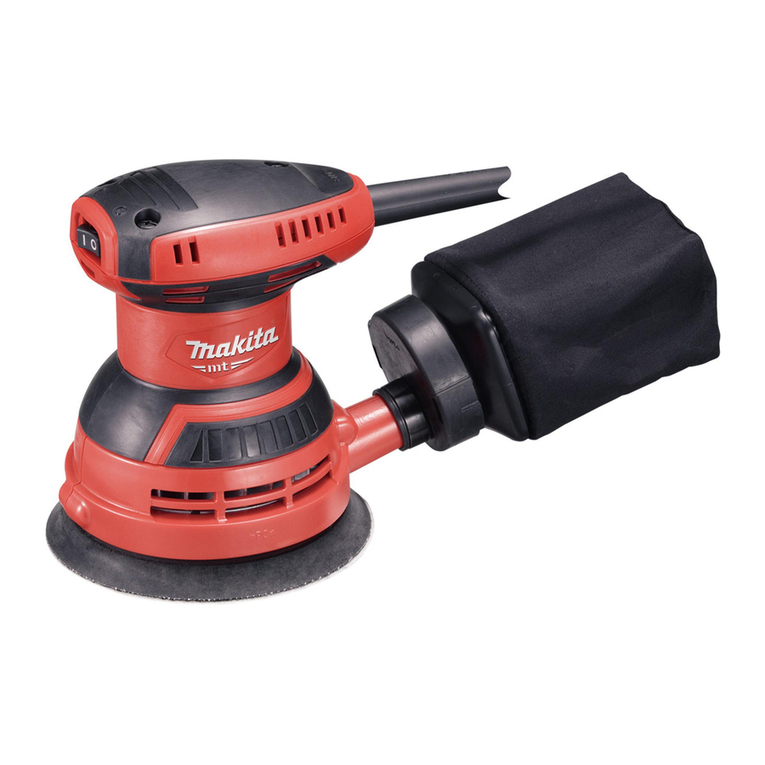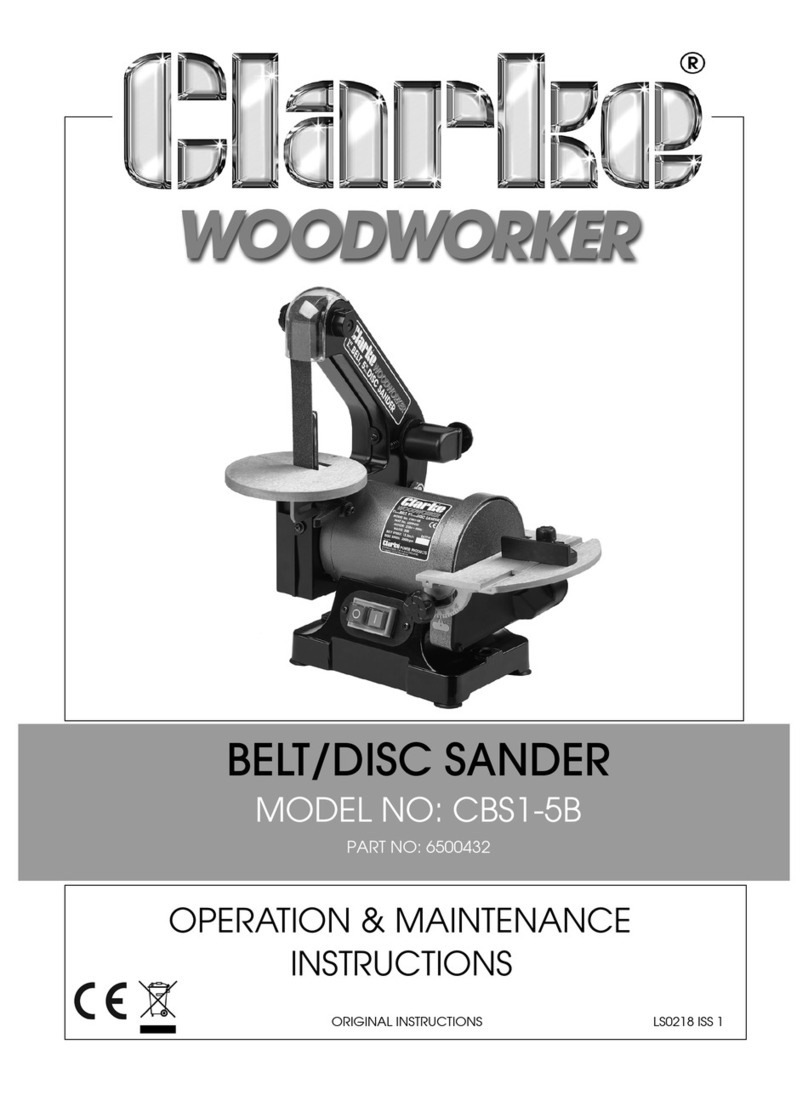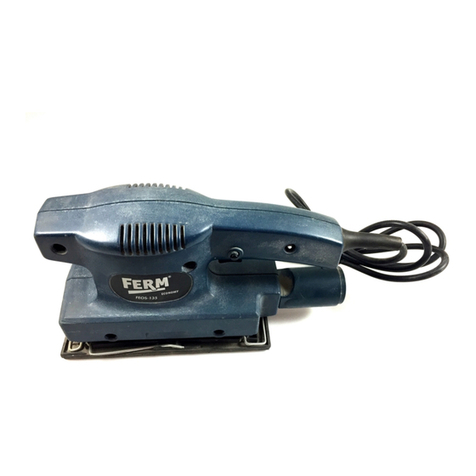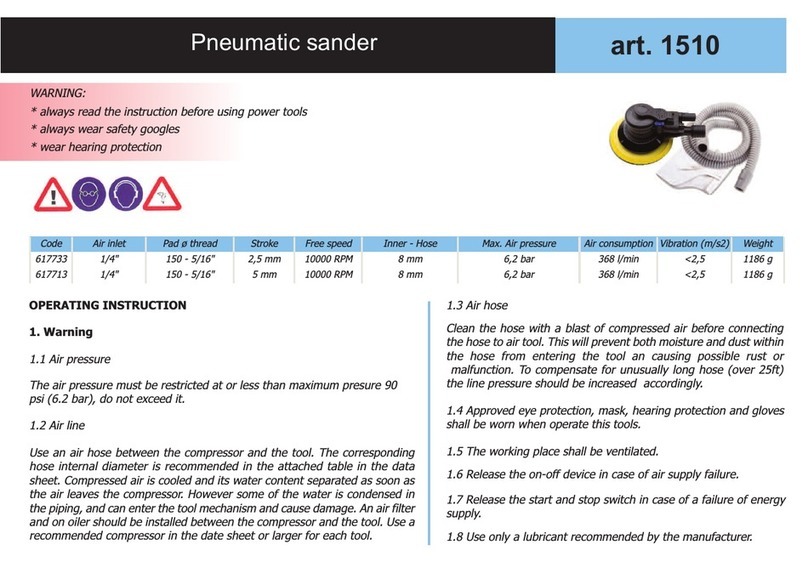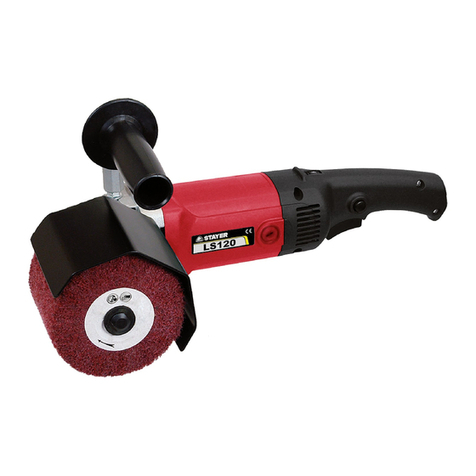
2
■Disconnect the plug from the power source and/
or remove the battery pack, if detachable, from
the power tool before making any adjustments,
changing accessories, or storing power tools. Such
preventive safety measures reduce the risk of starting
the power tool accidentally.
■Store idle power tools out of the reach of children
and do not allow persons unfamiliar with the power
tool or these instructions to operate the power tool.
Power tools are dangerous in the hands of untrained
users.
■Maintain power tools and accessories. Check for
misalignment or binding of moving parts, breakage
of parts and any other condition that may affect the
power tool’s operation. If damaged, have the power
tool repaired before use. Many accidents are caused
by poorly maintained power tools.
■Keep cutting tools sharp and clean. Properly
maintained cutting tools with sharp cutting edges are
less likely to bind and are easier to control.
■Use the power tool, accessories and tool bits etc.
in accordance with these instructions, taking into
account the working conditions and the work to
be performed. Use of the power tool for operations
different from those intended could result in a
hazardous situation.
■Keep handles and grasping surfaces dry, clean
and free from oil and grease. Slippery handles and
grasping surfaces do not allow for safe handling and
control of the tool in unexpected situations.
BATTERY TOOL USE AND CARE
■Recharge only with the charger specified by the
manufacturer. A charger that is suitable for one type
of battery pack may create a risk of fire when used with
another battery pack.
■Use power tools only with specifically designated
battery packs. Use of any other battery packs may
create a risk of injury and fire.
■When battery pack is not in use, keep it away from
other metal objects, like paper clips, coins, keys,
nails, screws or other small metal objects, that can
make a connection from one terminal to another.
Shorting the battery terminals together may cause
burns or a fire.
■Under abusive conditions, liquid may be ejected
from the battery; avoid contact. If contact
accidentally occurs, flush with water. If liquid
contacts eyes, additionally seek medical help.
Liquid ejected from the battery may cause irritation or
burns.
■Do not use a battery pack or tool that is damaged or
modified. Damaged or modified batteries may exhibit
unpredictable behaviour resulting in fire, explosion or
risk of injury.
■Do not expose a battery pack or tool to fire
or excessive temperature. Exposure to fire or
temperature above 130°C may cause explosion.
■Follow all charging instructions and do not charge
the battery pack or tool outside the temperature
range specified in the instructions. Charging
improperly or at temperatures outside the specified
range may damage the battery and increase the risk
of fire.
SERVICE
■Have your power tool serviced by a qualified repair
person using only identical replacement parts.
This will ensure that the safety of the power tool is
maintained.
■Never service damaged battery packs. Service
of battery packs should only be performed by the
manufacturer or authorized service providers.
SANDER SAFETY WARNINGS
■Always wear safety goggles and a dust mask when
sanding, especially sanding overhead.
■A suitable breathing respirator must be worn while
sanding lead paint, some woods and metal to avoid
breathing the harmful/toxic dust or air. Contact with
or inhalation of dust produced from these materials can
endanger the health of operator and bystanders.
■Do not throw sanding dust on an open fire because
materials in fine particle form may be explosive.
■Do not use the product for wet sanding.
■Do not use sanding paper larger than needed. Extra
paper extending beyond the sanding pad can also
cause serious lacerations.
■When not in use, all tools should be disconnected from
power source.
■Caution, fire hazard! Avoid overheating the object being
sanded as well as the sander. Always empty the dust
collector before taking breaks.
■Protect the battery against heat (e.g., continuous
intense sunlight and fire), water, and moisture.
■Properly dispose of dropped or damaged battery
immediately.
■Clamp workpiece with a clamping device.
Unclamped workpieces can cause severe injury and
damage. Do not hold the material you are sanding by
hand.
■Do not apply excessive pressure to the product.
■Ambient temperature range for tool during operation is
between 0°C and 40°C.
■Ambient temperature range for tool storage is between
0°C and 40°C.
■The recommended ambient temperature range for the
charging system during charging is between 10°C and
38°C.
